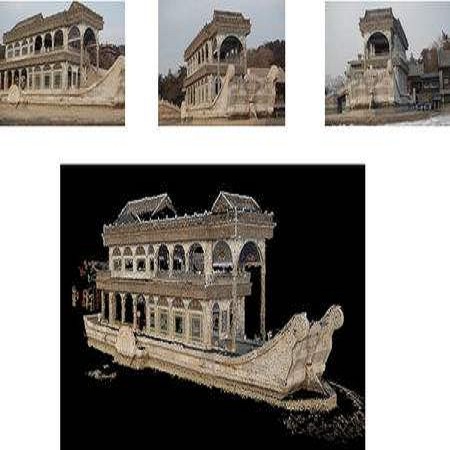Fusing live fluoroscopy images with a 3D rotational reconstruction of the vasculature allows to navigate endovascular devices in minimally invasive neuro-vascular treatment, while reducing the usage of harmful iodine contrast medium. The alignment of the fluoroscopy images and the 3D reconstruction is initialized using the sensor information of the X-ray C-arm geometry. Patient motion is then corrected by an image-based registration algorithm, based on a gradient difference similarity measure using digital reconstructed radiographs of the 3D reconstruction. This algorithm does not require the vessels in the fluoroscopy image to be filled with iodine contrast agent, but rather relies on gradients in the image (bone structures, sinuses) as landmark features. This paper investigates the accuracy, robustness and computation time aspects of the image-based registration algorithm. Using phantom experiments 97% of the registration attempts passed the success criterion of a residual registration error of less than 1 mm translation and 3{\deg} rotation. The paper establishes a new method for validation of 2D-3D registration without requiring changes to the clinical workflow, such as attaching fiducial markers. As a consequence, this method can be retrospectively applied to pre-existing clinical data. For clinical data experiments, 87% of the registration attempts passed the criterion of a residual translational error of < 1 mm, and 84% possessed a rotational error of < 3{\deg}.
翻译:以 3D 重建 3D 重建 3D 重建 3D 重建 3D 的 活含氟镜图像 以 3D 旋转重建 3D 血管图象 使用 3D 滚动法 能够 导航最小侵入性神经血管血管治疗的内窥镜装置,同时减少使用有害的碘对比介质 。 使用 X- 光 C- 武器测量的传感器信息, 将含氟镜像与 3D 重建 3D 重建 3D 重建 3D 以 图像基调算法纠正病人运动。 这种算法不要求将含氟-3D 镜像的容器填充碘化剂,而是依赖图像中的梯度( bone 结构、 鼻涕灭) 作为里程碑特性的使用。 本文对基于图像的登记算法的准确性、 强性和计算时间方面进行了初始化 。 使用 幻象实验 97% 的登记尝试通过了 残留登记错误的成功标准, 不到 1 毫米 和 3\ deg 轮转 。 该算法 确定2D 3D 注册 登记的新方法, 不需要 3 的校验校验校验校 。



